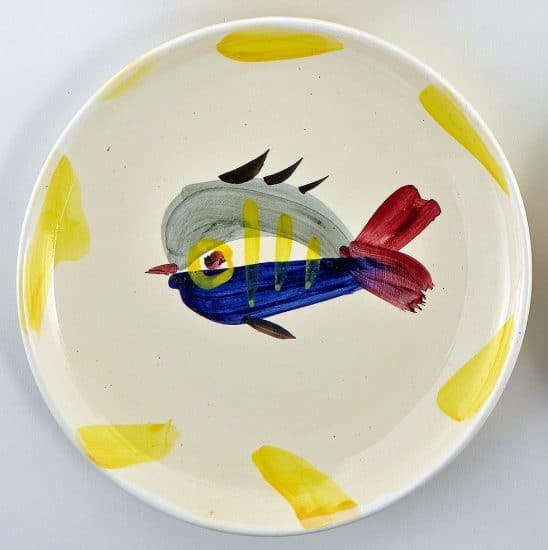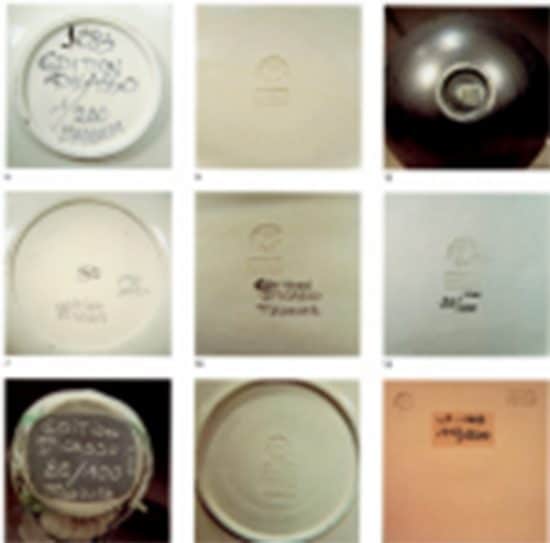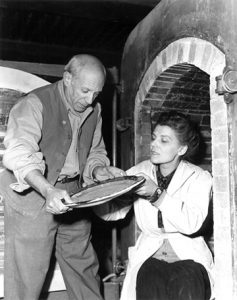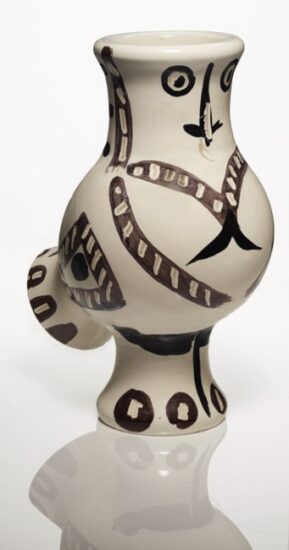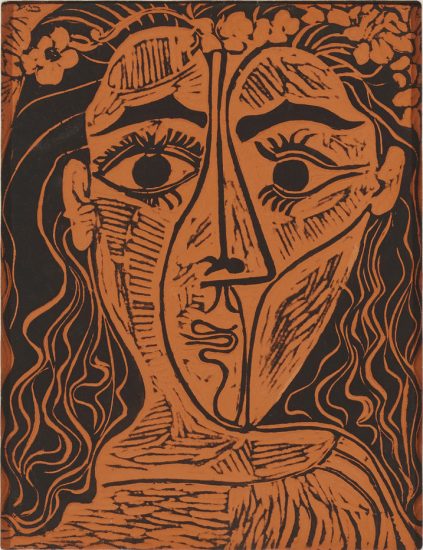During his time in Vallauris, Pablo Picasso created a vast oeuvre of ceramic works with the help of Georges and Suzanne Ramié at the Madoura pottery studio. Picasso ceramics, also called Picasso Madoura ceramics and Picasso pottery, were created in all varieties of forms – a favorite of which is the oval plate.
The Picasso ceramic oval plate has a thinner lip than the rectangular dishes and the edges are smooth all the way around. Like the round plates and the rectangular dishes, the lip of the oval plate is often used to hold abstracted decoration which acts as a border for the image.
One reoccurring motif that Picasso utilizes on the oval plates is the ‘face in an oval.’
There are multiple examples of this, and though the main idea is the same in all of them, each is very unique. This similarity in form, but difference in decoration, could be a one basis on which to build a collection of Picasso ceramic oval plates.
Another reoccurring theme that Picasso explores in his ceramic oval plates is that of the fish plate. Stylistically, this is a plate upon which a fish is drawn. In the example below, Picasso has used the contours of the plate to create the body of the fish.
Picasso’s art has always been inspired by ancient Greek mythology - it comes across easily in his interest with fauns as well as some of his more Grecian depictions of his lovers. In particular to ceramic works, the decorative scheme of black on terracotta colored clay mirrors ancient Greek black-figure pottery. Picasso also painted on pieces of broken ceramics, clearly inspired by the ancient pottery sherds excavated by archaeologists. Shown below on the top are sherds that Picasso created in 1950, and on the bottom right are sherds of Greek black-figure pottery.
A Greek ‘fish plate’ is a round plate with a divot in the center which is thought to have held sauce. The plate is decorated with sea creatures, many of them fish, hence the name. The plate is also thought to have been used to serve fish. Picasso’s fish plates most notably include the decorative fish aspect.
Picasso ceramic oval plates are an excellent representation of Picasso’s achievement as an artist. They exemplify his ingenuity in working with new and different mediums, as well as his curiosity into the cultures and arts of other peoples that have come before. Whether a collector is looking for a piece of great technical skill, aesthetic beauty, or one that has an art historical past, Picasso Ceramic oval plates are the right place to look.
Enjoy our fine art collection of Pablo Picasso ceramic plates.

